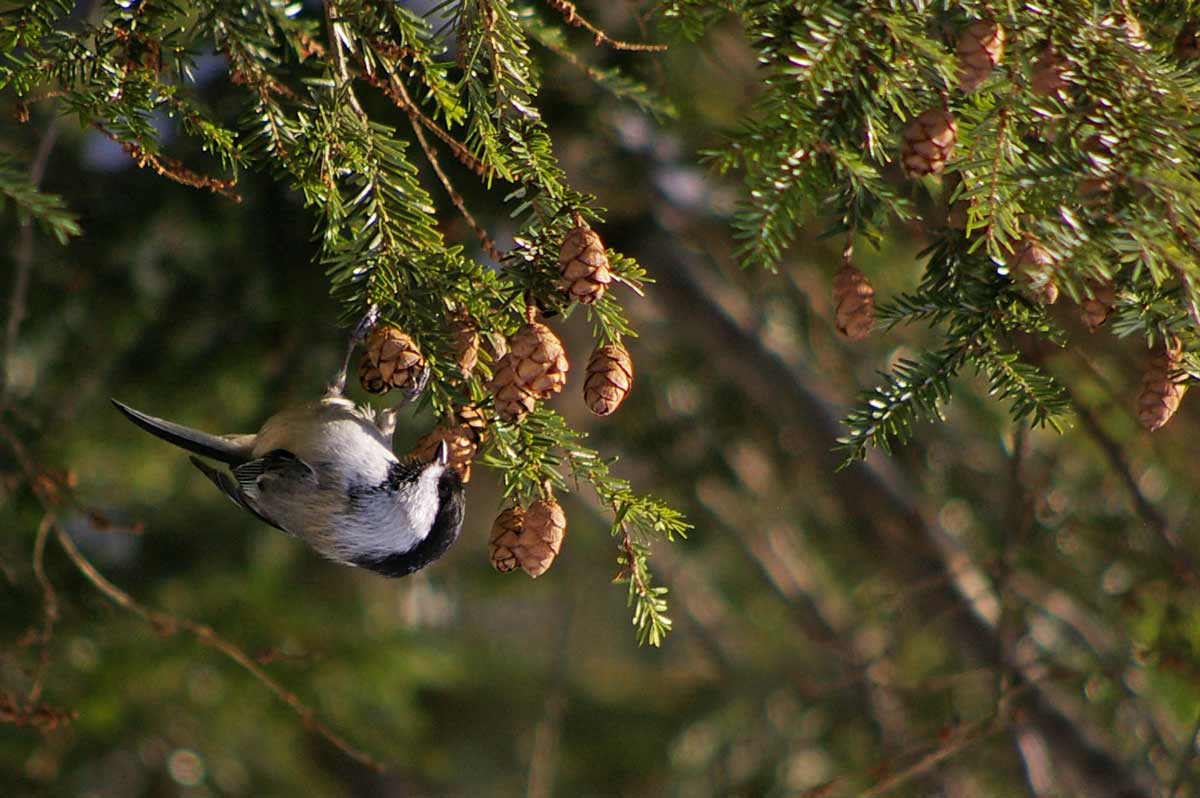
Chickadees are a common bird species participants in the Great Backyard Bird Count can expect to spot across Pennsylvania in winter.
Bob Frye/Everybody Adventures
Backyard birds may be a sign of spring for some.
But in truth?
They’re an icon for each and every season. That includes winter.
Plenty of bird species – 60 or so, in actuality — live in Pennsylvania year-round or show up only in winter. The list includes everything from northern cardinals and chickadees to Carolina wrens and assorted woodpeckers.
A few species do more than just hang on, waiting for warmer weather, too.
“Some of these residents begin their nesting season in the middle of the harshest winter days,” said Dan Brauning, chief of the wildlife diversity section for the Pennsylvania Game Commission.
Bald eagles and great horned owls are among them.
Audubon Society of Western Pennsylvania, in fact, confirmed that the eagle nest in Hays has already produced an egg.
One of the two adults associated with that nest is always on site. When either stand up, it’s possible to see their egg – or soon, eggs — via the Society’s eagle cam.
The Pennsylvania Game Commission also has two cameras on an eagle nest in Hanover. Birds are using it, with expectations that they’ll soon produce young, too.
All of those cameras are popular, and it’s no surprise. According to a U.S. Fish and Wildlife Survey, more than 45 million Americans are bird watchers, and they contribute more than $75 billion annually to the national economy.
Once again this year, researchers are hoping to take advantage of that.
The Cornell Lab of Ornithology is coordinating the Great Backyard Bird Count — see it here — from Feb. 16-19.
“The GBBC is an annual citizen-science project that asks novice bird watchers and lifelong bird enthusiasts alike to collect data that scientists will use to create a ‘real-time snapshot’ of the locations of birds around the world. Scientists use this information to understand how populations of birds are changing from year to year,” reads a description from Cornell.
Participants count and log the birds they see at feeders or in their yards, by day. They enter that information into the Count’s website.
The variety of birds participants can expect to see is relatively large.
“Typically, there are about 15 to 20 common species of birds that will visit your feeders and yards during the count,” said Audubon Pennsylvania.
And don’t worry, there are lots of resources out there to help identify which birds are which. Cornell and Audubon both have bird identification information on their websites.
It’s possible to make your yard more attractive to lots of birds, too.
Feeders can make a difference, said Brauning. Stocking them with black oil sunflower seeds, with some suet nearby, will attract most birds.
“Between those two food sources, you are providing the needs for the vast majority of birds that would come to a feeder,” he said.
In addition to that, planting native tree and bush species is an effective way to attract birds. Pennsylvania’s Department of Conservation and Natural Resources has some tips on what to plant and where, along with ideas on other ways to make your yard wildlife friendly.
And then? Well, it’s just a matter of counting.








